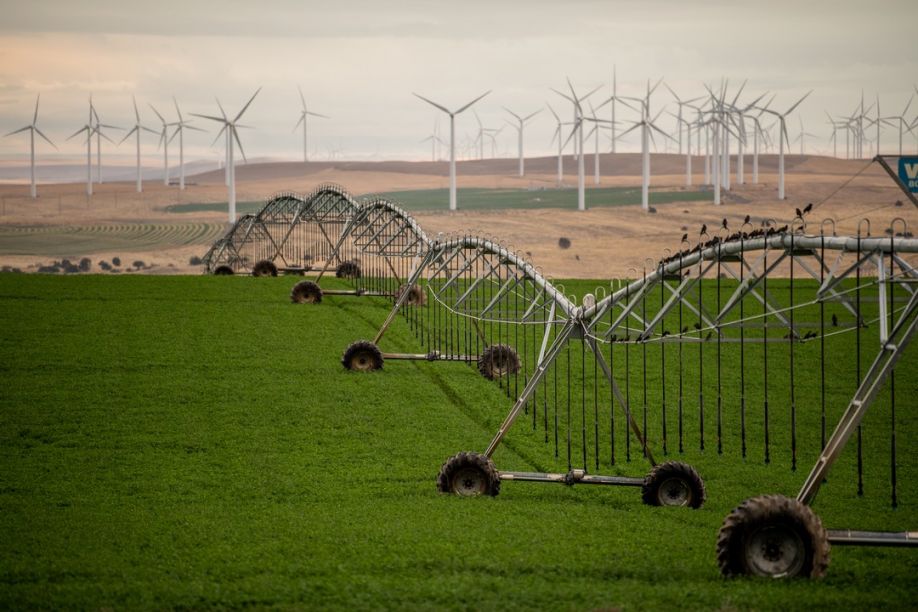WATER CONSERVATION HIGHEST PRIORITY FOR AGRICULTURE FIRMS AS DROUGHT THREAT INTENSIFIES

Agriculture firms are prioritising water conservation and waste reduction over other sustainability ambitions, as drought levels are expected to continue to threaten livelihoods globally.[1]
Agriculture leaders place water conservation and waste reduction top of their priority list (33%), followed by reaching Net Zero by 2050 (29%) – as the industry tackles immediate shortages while aiming to achieve environmental, social and governance (ESG) targets. Another top priority was staff wellbeing and safety goals (22%). The results are from a new global, independent research report commissioned by Inmarsat, a world leader in global, mobile satellite communications.
Inmarsat’s report ‘Accelerating sustainable action through IoT’ explores the views of over 200 senior technology and ESG decision-makers within agriculture firms across Europe, North and South America, Africa and Asia. The survey asked professionals about their ESG priorities and whether they believed data provided by ‘Internet of Things’ (IoT) solutions could help improve reporting transparency and overall sustainable outcomes.
ACHIEVING INDUSTRY ESG GOALS THROUGH IOT
The findings suggest the industry is tackling competing sustainability priorities, highlighting the need for smart connected solutions to help businesses meet shared goals. ESG is a concern for almost all agriculture firms, with 9 out of 10 stating it is a top priority for management. Meanwhile, 76% say they have clear ESG targets in place that their business is working towards.
Despite this focus, business leaders are still struggling to track ESG metrics – with 51% of respondents reporting difficulty measuring tangible progress against environmental governance in particular.
Many also feel they lack the hard data required to achieve ESG goals. Almost half believe (45%) better automation and digitalisation of data capture would help improve their understanding of their ESG successes and failures. They say this will ultimately help them achieve their overall sustainability ambitions.
Elsewhere, 74% of decision makers in agriculture plan to leverage connected IoT solutions to more accurately measure and understand the impact of their sustainability solutions in the next year.
The same number have already seen return on investment of IoT solutions when it comes to improving sustainability, including 20% specifically seeing a reduction in their water usage as a result.
SATELLITE AS A SOLUTION
To implement IoT effectively, businesses must have the right connectivity solutions to support their specific needs – with 86% of respondents agreeing that satellite communications is the key to harnessing the full potential of connected IoT solutions.
Networks such as Inmarsat ELERA are central to this process, providing ultra-reliable global connectivity to support IoT-based data collection, analytics and reporting, helping businesses achieve their water consumption targets and provide proof of progress.
Looking ahead, satellites appear set to become the most popular method of connectivity for agriculture firms over the longer term, with a third of agriculture businesses expecting to depend on satellite connectivity network over the next 10+ years. This is compared to 22% who plan to rely on WiFi and 20% who plan to use cellular.
Steven Tompkins, Director of Market Development, Inmarsat, said “Agriculture accounts for 70% of all freshwater withdrawals globally, on average.[2] That means farmers are under constant pressure to reduce their usage. That pressure is only increasing as instances of extreme weather and drought continue.
“However, if you cannot measure your water usage, you cannot manage it. IoT-enabled solutions, like remote irrigation control and tank and trough monitoring, can help farmers use the right amount of water at the right time. Connected solutions can also enable more robust ESG reporting which leads to better transparency across business operations, allowing operators of farms to save water, increase energy efficiency and lower fuel usage – whilst also demonstrating tangible progress on sustainable outcomes.
“Many of the locations where these technologies are being used are a long way from urban settlements and are therefore not covered by public cellular internet services. Installing private terrestrial networks for these sites is often prohibitively expensive, making satellite the only practical and reliable connectivity solution. The right satellite solution can be small form factor, with low power consumption and have a track record of staying in operation for well over 10 years. This keeps long-term connectivity costs to a minimum and enables farmers to utilise water monitoring and management technologies in remote sites, improving efficiencies and overall sustainability.”
ABOUT INMARSAT
Inmarsat delivers world leading, innovative, advanced and exceptionally reliable global, mobile communications across the world – in the air, at sea and on land - that are enabling a new generation of commercial, government and mission-critical services. Inmarsat is powering the digitalisation of the maritime industry, making operations more efficient and safer than ever before. It is driving a new era of inflight passenger services for aviation, while ensuring that aircraft can fly with maximum efficiency and safety. Furthermore, Inmarsat is enabling the rapid expansion of the Internet of Things (IoT) and enabling the next wave of world-changing technologies that will underpin the connected society and help build a sustainable future. And now Inmarsat is developing the first-of-its-kind, multi-dimensional communications network of the future, ORCHESTRA.
In November 2021, Inmarsat and Viasat announced the planned combination of the two companies, to create a new leader in global communications.
For further information, follow us: Twitter | LinkedIn | Facebook | YouTube | Instagram.
Comments (0)
This post does not have any comments. Be the first to leave a comment below.
Featured Product

